The official currency of Bulgaria is the Bulgarian lev (BGN), which has been in circulation since 1881. The lev is divided into 100 stotinki, and coins are available in denominations of 1, 2, 5, 10, 20, and 50 stotinki, as well as 1 and 2 lev. Banknotes are available in denominations of 2, 5, 10, 20, 50, and 100 lev.
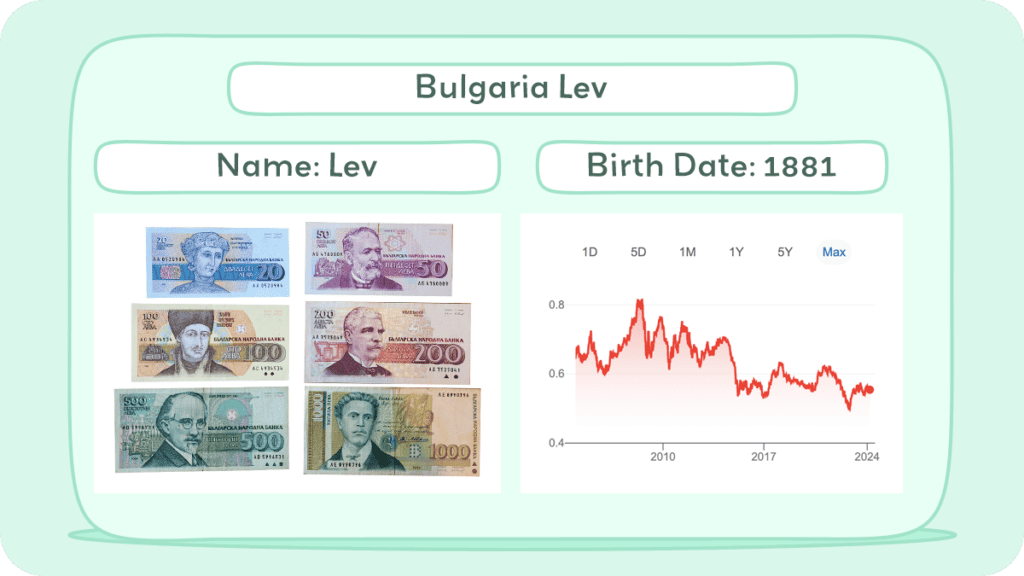
One unique aspect of the Bulgarian currency is that the country has been in a system of currency board since 1997. This means that all Bulgarian currency in circulation is completely backed by the foreign exchange reserves of the Bulgarian National Bank (BNB). As a result, the exchange rate for the Bulgarian lev is relatively stable compared to other currencies.
This article delves into the Bulgarian lev, the official currency of Bulgaria. It explores the history of the lev, from its introduction in 1881 to its present-day form, alongside interesting facts about the currency.
Historical Journey of Bulgaria Currency
Bulgaria’s currency, the lev (BGN), has a rich and complex history that spans over a century. The lev was first introduced in 1881, and since then, it has undergone several changes in its design, value, and exchange rate.
Initially, the lev was pegged to the French franc, and its value was determined by the gold standard. However, after World War II, Bulgaria switched to a socialist economy, and the lev was devalued several times.
New coins were introduced in 1962, including the aluminum-bronze 1, 2, and 5 stotinki, and nickel-brass 10, 20, and 50 stotinki and 1 lev.
In the 1990s, Bulgaria transitioned to a market economy, and its currency underwent significant changes.
In 1997, the Bulgarian National Bank (BNB) implemented a currency board system, which pegged the lev to the German mark at a fixed exchange rate.
The currency board system was successful in stabilizing the lev and reducing inflation, and in 1999, the lev was pegged to the euro at a fixed exchange rate of 1.95583 BGN per euro, which remains in effect today.
Over the years, the design of the lev has also evolved. In 1999, new banknotes were introduced, featuring images of prominent Bulgarian figures and landmarks. In 2005, new coins were introduced, featuring the national emblem of Bulgaria and the year of minting.
Today, the lev is a stable and reliable currency that is widely accepted in Bulgaria. It is divided into 100 stotinki, and its symbol is лв. The BNB is responsible for issuing and regulating the circulation of the lev, and it holds significant foreign exchange reserves to back the currency.
History of Coins
The history of the Bulgarian lev spans over a century, starting in 1881 when it was introduced, pegged to the French franc and part of the Latin Monetary Union.
The lev saw several periods of gold and silver backing, with changes during the World Wars, including pegs to the German Reichsmark and the Soviet ruble. Post-war, the currency underwent hyperinflation, leading to multiple redenominations.
The first lev (1881-1952) included coins in various metals and banknotes backed by gold or silver.
The second lev (1952-1962) was introduced to counter wartime inflation, with new coins and banknotes featuring state symbols and notable figures like Georgi Dimitrov.
The third lev (1962-1999) was redenominated again, with coins and banknotes reflecting communist symbols and transitioning to the post-communist era with a peg to the Deutsche Mark in 1997.
The fourth lev (1999-present) saw a final redenomination, pegging the lev to the Deutsche Mark and later the euro, with Bulgaria joining the ERM II in 2020, aiming for euro adoption.
History of Bills
In 1999, Bulgaria introduced a new series of banknotes in the denominations of 1, 2, 5, 10, 20, and 50 leva, with a 100 lev note added in 2003. The 1 and 2 lev notes were eventually replaced by coins and phased out of circulation.
These banknotes feature prominent Bulgarian figures and landmarks on both sides, with each note having a unique watermark related to its obverse subject. The 5 lev note, for example, showcases artist Ivan Milev and his paintings, while the 10 lev note features Petar Beron alongside astronomical instruments.
The series highlights Bulgaria’s rich cultural and scientific heritage, from Ivan Rilski and the Rila Monastery on the 1 lev note to Aleko Konstantinov and his work on the 100 lev note.
Over the years, several denominations have been updated with new printings, maintaining their validity in circulation, except for the 1 and 2 lev notes, which were withdrawn in 2016 and 2021, respectively.
Inflation and Buying Power of Bulgaria Currency

If you’re interested in the Bulgarian currency, it’s important to understand inflation and its impact on the buying power of the Bulgarian lev. Inflation is the rate at which the general level of prices for goods and services is rising, and it can have a significant impact on the value of a currency.
According to the IMF, inflation dynamics in Bulgaria are influenced by common factors that affect the European Union’s inflation variation.
However, country-specific factors can amplify or dampen the impact of these common factors on individual countries. In Bulgaria, greater weight of energy and food in the Consumer Price Index (CPI) basket amplifies the impact of shocks on headline inflation.
The purchasing power of the Bulgarian lev has been affected by inflation over the years. According to Knoema, the purchasing power parity (PPP) of Bulgaria increased from 0.6 LCU per international dollar in 2003 to 0.8 LCU per international dollar in 2022, growing at an average annual rate of 1.71%.
Purchasing power parity conversion factor is the number of units of a country’s currency required to buy the same amounts of goods and services in the domestic market as a U.S. dollar would buy in the United States.
To put it simply, inflation erodes the purchasing power of the Bulgarian lev. As prices rise, the same amount of money can buy fewer goods and services. This can lead to a decrease in the standard of living for individuals and businesses. It’s important to keep in mind that inflation can be affected by a variety of factors, including government policies, economic growth, and global events.
Bulgarian Lev
Bulgarian banknotes come in denominations of 1, 2, 5, 10, 20, 50, and 100 leva. Each banknote features a notable Bulgarian figure on one side and a significant cultural or historical landmark on the other. The banknotes are colorful and intricately designed, making them unique and collectible.
Coins are available in 1, 2, 5, 10, 20, and 50 stotinki, as well as 1 and 2 leva. The coins have a similar design to the banknotes, featuring notable Bulgarian figures and landmarks.
1 lev
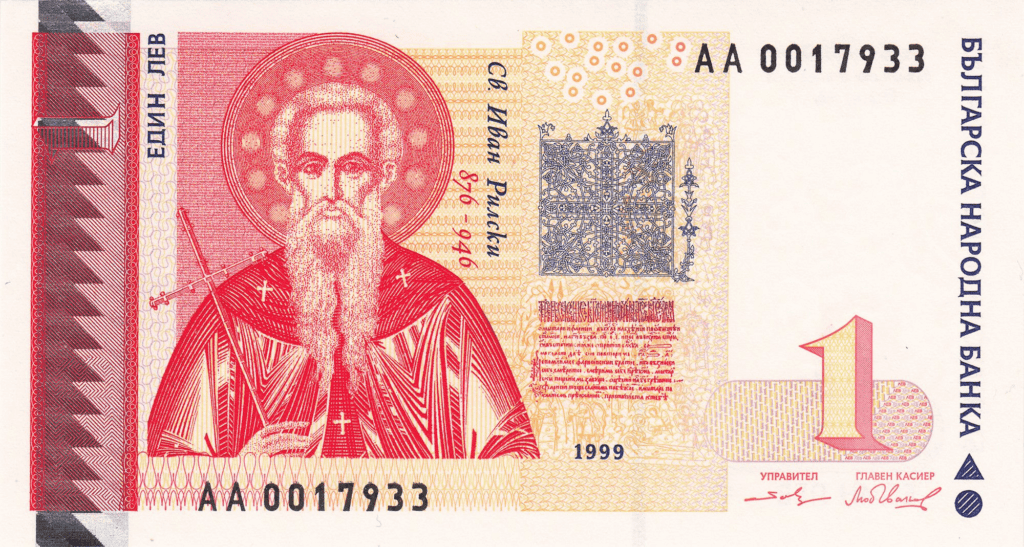
The 1 lev banknote features the Ivan Rilski on the obverse and the Rila Monastery on the reverse.
2 leva
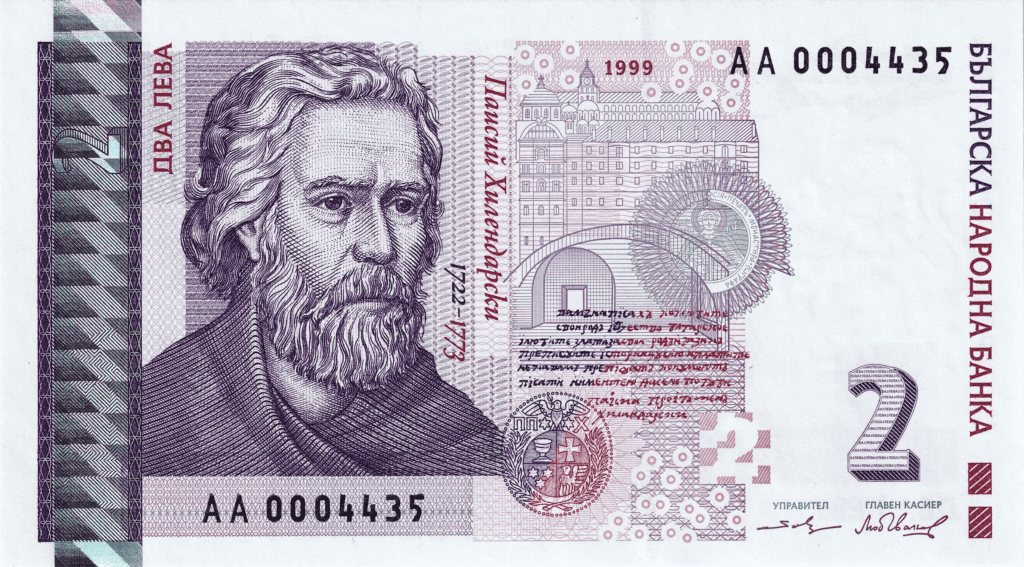
The 2 leva banknote features the Paisiy Hilendarski on the obverse and the Istoriya Slavyanobolgarskaya on the reverse.
5 leva
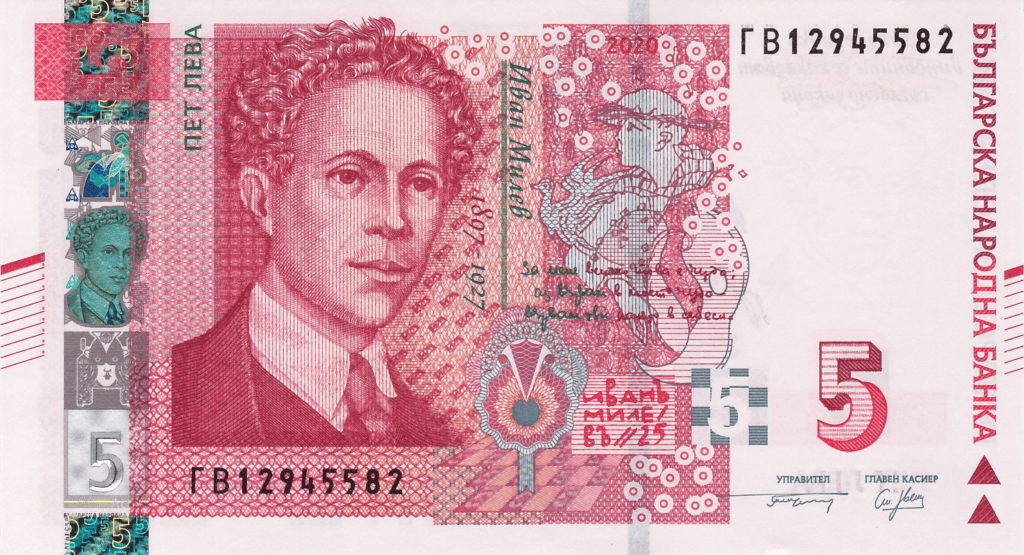
The 5 leva banknote features the Ivan Milev on the obverse and the Paintings by Ivan Milev on the reverse.
10 leva
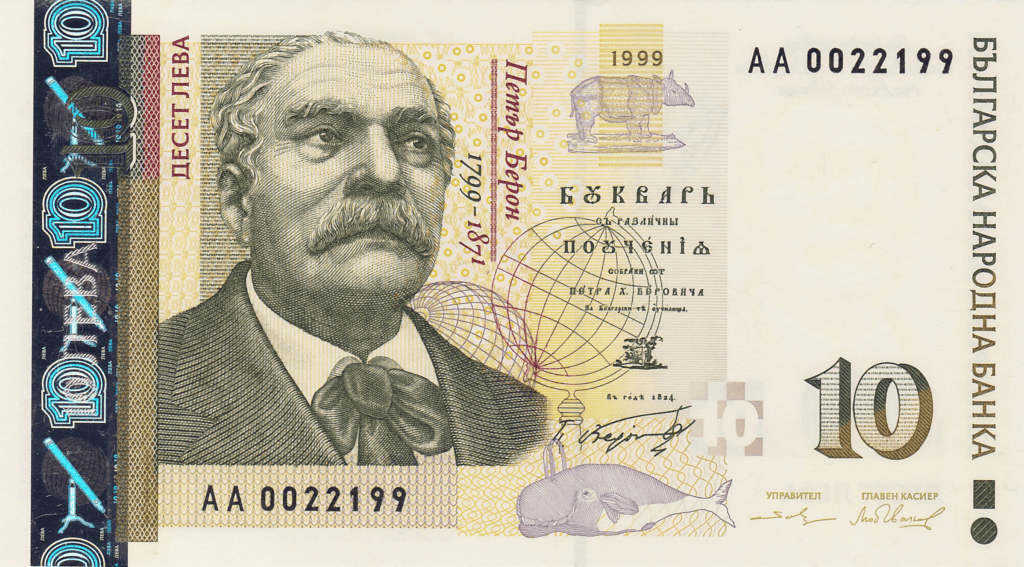
The 10 leva features the Petar Beron on the obverse and the Astronomical instruments on the reverse.
20 leva
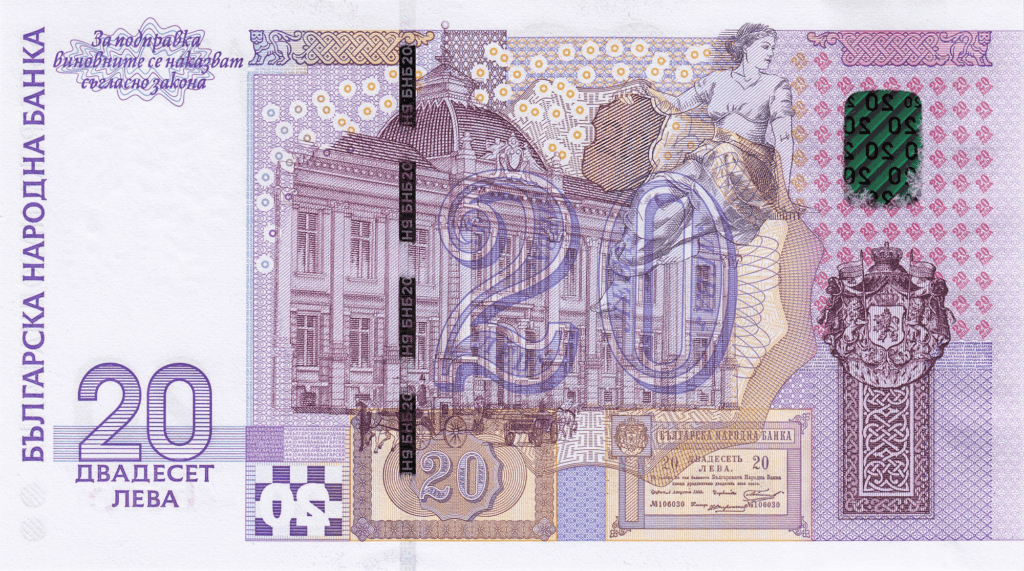
The 20 leva features the Stefan Stambolov on the obverse and the Orlov most, Lavov most on the reverse.
50 leva
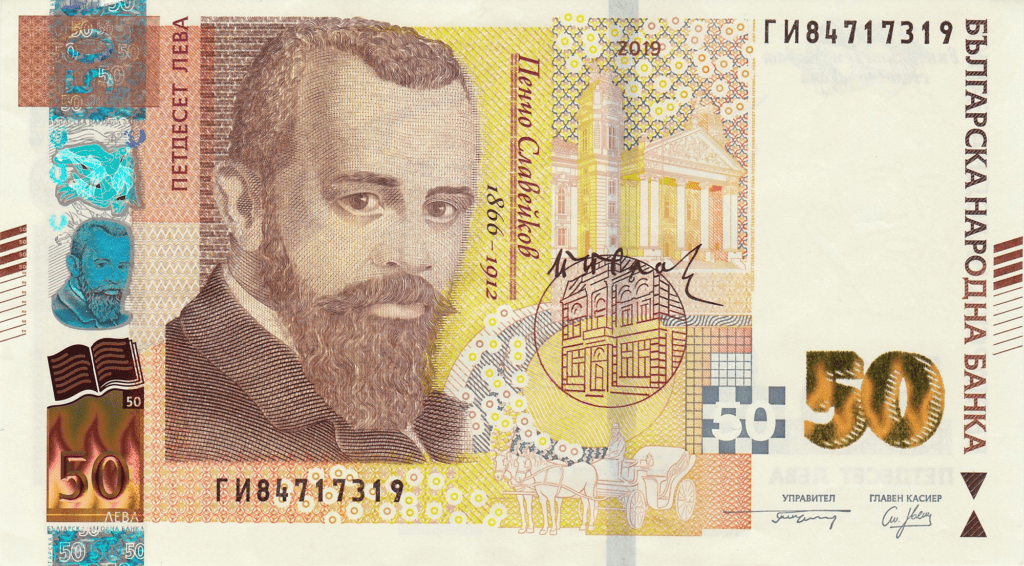
The 50 leva features the Pencho Slaveykov on the obverse and the Poems by Pencho Slaveykov on the reverse.
100 leva
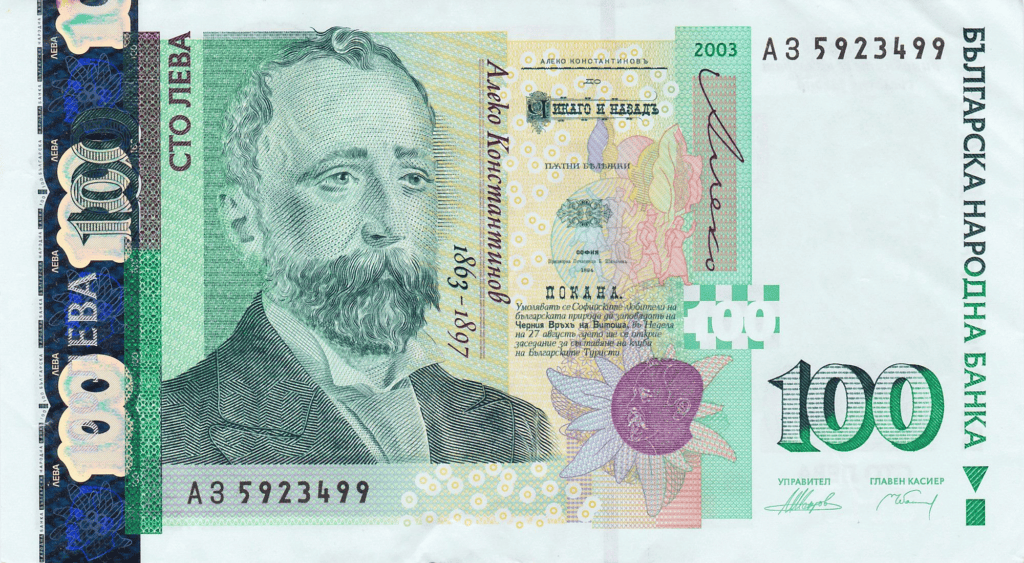
The 100 leva features the Aleko Konstantinov on the obverse and Aleko Konstantinov; his work “Bay Ganyo” on the reverse.
Currency Usage in Bulgaria
When traveling to Bulgaria, it is important to understand the currency used in the country. The official currency of Bulgaria is the Bulgarian lev (BGN), which is divided into 100 stotinki. You will find banknotes in denominations of 1, 2, 5, 10, 20, 50, and 100 leva, as well as coins in denominations of 1, 2, 5, 10, 20, and 50 stotinki.
Is USD accepted in Bulgaria?
While some hotels, restaurants, and shops in Bulgaria may accept US dollars, it is recommended that you use the local currency for all transactions. Using USD may result in unfavorable exchange rates and additional fees.
It is also important to note that many smaller businesses may not accept credit cards, so it is advisable to carry cash with you at all times.
When exchanging currency in Bulgaria, it is best to use authorized exchange offices or banks to ensure that you receive a fair exchange rate. Avoid exchanging money on the street or through unofficial channels, as this can result in counterfeit bills or other fraudulent activity.
Overall, using the Bulgarian lev for all transactions during your time in Bulgaria is the most convenient and cost-effective option. By using the local currency, you can avoid additional fees and ensure that you are receiving a fair exchange rate for your money.
Exchanging Currency in Bulgaria
Where can I exchange Bulgarian currency?
When you arrive in Bulgaria, you can exchange your currency at the airport, banks, exchange offices, and hotels. Exchange offices are the most convenient, but they often charge higher fees than banks.
It’s important to compare exchange rates and fees before exchanging your money. You can check the current exchange rates online or use a currency converter app.
What to know before exchanging currency in Bulgaria
Before exchanging your currency in Bulgaria, there are a few things you should know:
- Bulgarian lev (BGN) is the official currency of Bulgaria. You can exchange your currency for BGN at most banks and exchange offices.
- It’s best to exchange your currency in Bulgaria, as exchanging it in your home country may result in a lower exchange rate.
- Be aware of commission fees when exchanging your currency. Exchange offices and hotels may charge higher fees than banks. Look for exchange offices with lower fees or no commission.
- Always count your money before leaving the exchange office. Make sure you receive the correct amount of money and check for counterfeit bills.
- ATMs are widely available in Bulgaria and accept most major credit and debit cards. However, be aware of ATM fees and foreign transaction fees charged by your bank.
By following these tips, you can ensure that you get the best exchange rate and avoid any unnecessary fees when exchanging your currency in Bulgaria.
Choosing Between USD and Bulgaria
If you are planning a trip to Bulgaria, you may be wondering whether to use US dollars (USD) or Bulgarian leva (BGN) during your stay. Here are some factors to consider when choosing between the two currencies.
Exchange rate
The exchange rate between the Bulgarian lev and other currencies varies depending on the market. It’s important to keep an eye on the exchange rate if you plan on exchanging currency. You can use online currency converters like XE to stay up-to-date on the latest rates.
Convenience
While some places in Bulgaria may accept USD, it’s generally more convenient to use BGN. Most businesses, including restaurants and shops, only accept BGN. Additionally, ATMs in Bulgaria dispense BGN, so you’ll need to convert your USD to BGN if you want to withdraw cash.
Fees
When exchanging currency, be aware of any fees that may be charged. Banks and currency exchange offices may charge a commission or a flat fee for exchanging currency.
Additionally, credit card companies may charge a foreign transaction fee for purchases made in a foreign currency. Compare fees to find the best option for you.
Tips
When traveling in Bulgaria, it’s customary to leave a small tip for good service. Tipping is usually around 10% of the total bill in restaurants, cafes, and bars. However, it’s important to tip in BGN, as leaving USD may be seen as disrespectful.
Overall, it’s recommended to use BGN when traveling in Bulgaria. While USD may be accepted in some places, it’s generally more convenient to use the local currency. Keep an eye on the exchange rate and compare fees to find the best option for exchanging currency. And don’t forget to tip in BGN!
Cost of Living in Bulgaria
If you are planning to move to Bulgaria, it is important to understand the cost of living in the country. According to Expatistan, the cost of living in Bulgaria is cheaper than in 75% of countries in the world.
Numbeo also reports that the cost of living in Bulgaria is, on average, 46.5% lower than in the United States.
One of the biggest expenses in Bulgaria is accommodation. The cost of housing can vary greatly depending on the location and size of the property.
According to Expat Focus, the average monthly rent for a one-bedroom apartment in the city center is BGN 500-700, while a three-bedroom apartment in the same location can cost BGN 1,000-1,500 per month. If you are looking to buy property in Bulgaria, the cost will depend on the location and size of the property.
The cost of food and drink in Bulgaria is generally lower than in other European countries. According to Numbeo, a meal at an inexpensive restaurant in Bulgaria costs around BGN 10, while a three-course meal for two at a mid-range restaurant costs around BGN 50.
The cost of groceries is also relatively low, with a liter of milk costing around BGN 1.50 and a loaf of bread costing around BGN 1.
Transportation in Bulgaria is generally affordable. A monthly pass for public transportation in Sofia costs around BGN 50, while a one-way ticket costs around BGN 1.60. If you plan to drive in Bulgaria, you should be aware that gasoline prices are relatively high compared to other goods in the country.
Overall, the cost of living in Bulgaria is relatively low compared to other European countries. However, the cost of accommodation can vary greatly depending on the location and size of the property. It is important to research the cost of living in your specific location before making any big financial decisions.
Don’t Get Scammed Tips
Bulgaria is a beautiful country with a rich history and culture. However, like any other tourist destination, there are scammers looking to take advantage of unsuspecting visitors. Here are some tips to help you avoid common scams in Bulgaria:
1. Be Careful with Your Money
When traveling in Bulgaria, it’s important to keep your money safe. Avoid carrying large amounts of cash and keep your wallet in a secure place. Be wary of pickpockets in crowded areas, such as markets and public transportation. If you need to withdraw money, use ATMs located inside banks or shopping centers, and always cover the keypad when entering your PIN.
2. Watch Out for Tourist Traps
Some scammers in Bulgaria will try to lure you into tourist traps, such as overpriced restaurants or shops selling fake souvenirs. Always research the prices of things beforehand and be wary of anyone offering you a deal that seems too good to be true. Stick to reputable restaurants and shops, and ask locals for recommendations.
3. Be Cautious with Taxis
Taxis in Bulgaria can be expensive, and some drivers will try to overcharge tourists. Always make sure the meter is turned on before getting into a taxi, and agree on the price beforehand if possible. If you’re unsure about the fare, ask a local or use a ride-sharing app like Uber or Bolt.
4. Avoid Unsecured Wi-Fi Networks
Scammers can easily steal your personal information if you connect to unsecured Wi-Fi networks in Bulgaria. Always use a virtual private network (VPN) when accessing the internet on your phone or laptop. If you need to connect to Wi-Fi, make sure it’s from a secure and trusted source, such as your hotel or a coffee shop.
By following these tips, you can enjoy your trip to Bulgaria without falling victim to scams. Remember to stay vigilant and use common sense, and you’ll have a safe and enjoyable experience.

